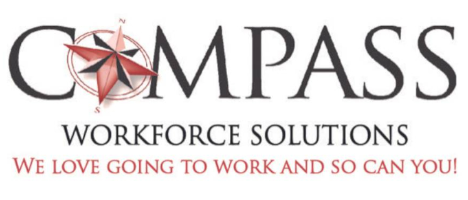[av_post_metadata post_selected=” seperator=’/’ before_meta_content=” after_meta_content=” margin=” margin_sync=’true’ padding=” padding_sync=’true’ av-desktop-margin=” av-desktop-margin_sync=’true’ av-desktop-padding=” av-desktop-padding_sync=’true’ av-medium-margin=” av-medium-margin_sync=’true’ av-medium-padding=” av-medium-padding_sync=’true’ av-small-margin=” av-small-margin_sync=’true’ av-small-padding=” av-small-padding_sync=’true’ av-mini-margin=” av-mini-margin_sync=’true’ av-mini-padding=” av-mini-padding_sync=’true’ align=’left’ custom_title=” size=” av-desktop-font-size=” av-medium-font-size=” av-small-font-size=” av-mini-font-size=” alb_description=” id=” custom_class=” template_class=” av_uid=’av-lhv4t184′ sc_version=’1.0′ admin_preview_bg=”]
[av_metadata_item metadata=’published’ before_meta=” after_meta=” link_meta=’default’ link_target=” av_uid=’av-lhv4szva’ sc_version=’1.0′]
[av_metadata_item metadata=’categories’ before_meta=’in’ after_meta=” link_meta=’default’ link_target=” av_uid=” sc_version=’1.0′]
[/av_post_metadata]
 As business leaders we spend a lot of time tracking and monitoring our company’s performance based on data. Such rigor though seems to wane when it comes to measuring our company’s performance in finding and onboarding the right talent.
As business leaders we spend a lot of time tracking and monitoring our company’s performance based on data. Such rigor though seems to wane when it comes to measuring our company’s performance in finding and onboarding the right talent.
Given the current environment within which we have to operate, the fact that HR costs tend to make up, on average, 28% of a company’s operating expenses, and the unmistakable uptick in our businesses’ need to attract, recruit, train and retain talent, honing in our understanding and proactively managing our recruiting performance may very well offer us a competitive advantage.
What are recruitment metrics?
Recruitment metrics are quantifiable measures used to track and evaluate the status of our process of identifying, recruiting, selecting, hiring, and onboarding talent in our company. Recruitment metrics mostly capture time and money spent during specific stages of the recruitment process, from planning, advertising, and sourcing to onboarding a new hire. There are also recruitment metrics that capture conversion rates as you progress from one stage to the next (e.g., applied-to-interviewed, interviewed-to-offered, offered-to-accepted), which can serve as indicators of effectiveness or quality. You can also think of recruitment metrics as either process-focused (e.g., conversion rates, time spent at various stages of the process, costs spent on specific activities) or outcome focused (e.g., % of filled positions, quality of hire, % of diversity hires).
Why are they important?
Recruitment metrics provide insights into the value and effectiveness of finding, selecting, and onboarding talent to meet your business needs. Very much like other operational data, collecting and tracking recruitment-related metrics provides you with information on which parts of the hiring process are working well and where process improvements are needed. All too often we have a “feeling” that something we are doing is not yielding the results we are looking for but we lack the hard data to justify a switch in strategy or an investment in a different approach. Recruitment metrics enable you to manage your company’s talent acquisition performance in a proactive, efficient, and effective way. To combine the thoughts of Peter Drucker and Jack Welsh, if you don’t measure it, you cannot manage it or improve it.
Where to start?
While there are quite a few different recruitment metrics to choose from, they all tend to be linked to one of four broad categories:
- Source – where did a hire come from?
- Time – how long did it take to get a new hire onboard (or through each stage of the process)?
- Cost – how much did it cost to make the new hire? (Can be overall cost or specific costs associated with different stages in the process, such as advertising, testing, interviewing, background checking, etc.)
- Quality – how good was the new hire? (Can be in relation to the specifications we set out for the search or based on actual on-the-job performance.)
If you are not currently measuring your company’s recruiting performance, you should start small – pick no more than one metric in each of the categories. Then define what and how you are going to measure it. Make sure you document it as your internal SOP – if you are not consistent in how you measure things across time, it will be hard to compare shifts in performance. You can start with measuring overall performance (e.g., Total Time-to-Fill, Total Cost-of-Hire, etc.). Once you have a baseline of performance, you can hone in on areas that may fall short in meeting your goals (e.g., cost is too high or time to fill is too long) and refine your tracking to include performance across the different stages of the recruitment process.
Takeaways
Recruitment is a business process that needs to be measured like any other business process as it impacts in a very powerful way overall company performance (think employee performance, engagement, turnover, etc. and how they enable or hinder achievement of your business results). As a critical business process, you need to measure it by selecting the recruitment metrics that are most meaningful to your business, be it time, cost, or quality. If you don’t have recruitment metrics in place and you are engaged in regular hiring, it’s important that you start collecting and tracking your performance. It doesn’t matter where you start just as long as you start – just make sure you keep it small and simple at first. Once you know where you currently stand in terms of your recruitment operations performance, you can then proactively begin to manage and improve processes to deliver the right talent at the right time at the right cost to your business.
If you need assistance in creating or assessing the effectiveness of your company’s recruitment metrics, reach out to connect with one of our expert staff.








